Nestled in the folds of the Yunnan-Guizhou Plateau lies a city elevated by karst landforms. While most of China swelters under summer heat, locals in Guiyang leisurely savor sour soup fish, basking in the 23°C summer breeze that earns this city its title as “China’s Summer Resort Capital.” Known as the “Forest City,” this provincial capital marries the surreal beauty of karst topography with the enigmatic charm of millennia-old Tunpu villages, all while tantalizing visitors with a culinary world of spicy-sour-savory flavors waiting to be discovered through every bite and every step.
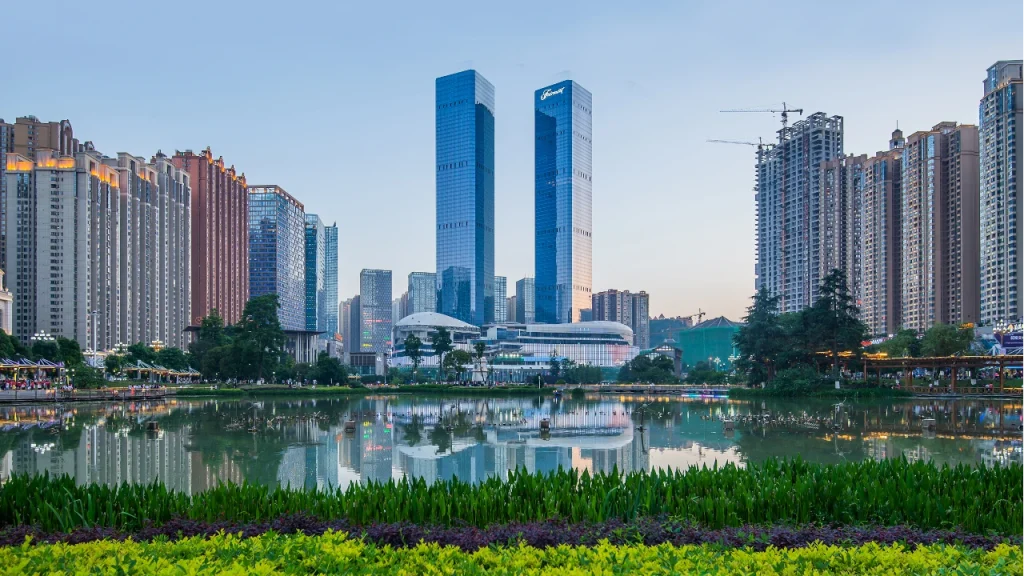
Chapter 1: Urban Cipher: A Three-Dimensional Tapestry Woven by Mountains and Rivers
1.Geographic Symphony
Nestled on the eastern slope of the Yunnan-Guizhou Plateau, Guiyang is cradled by the meandering Miaoling Mountain Range, which divides the city into northern and southern wings. The northern Guanshanhu District shimmers like an emerald set in the plateau, where modern architecture and wetland parks coexist in harmony; to the south, the Huaxi District cradles the Nanming River—Guiyang’s mother river—which carves a serpentine path through karst peaks, painting the “Ten-Li Riverbank as Clear as a Mirror” landscape.
Elevated at 1,100 meters above sea level, the city enjoys a unique climatic advantage. While summer heatwaves engulf the middle and lower reaches of the Yangtze River, Guiyang’s through-city breezes carry the crisp scent of pine forests, dissolving summer’s oppression into thin air. Though winter’s freezing weather brings fleeting chill, it also crafts the breathtaking spectacle of “Snow-Capped Forest City”—pine branches draped in silver, rime ice glittering like jade, as if stepping into a traditional ink-wash scroll.
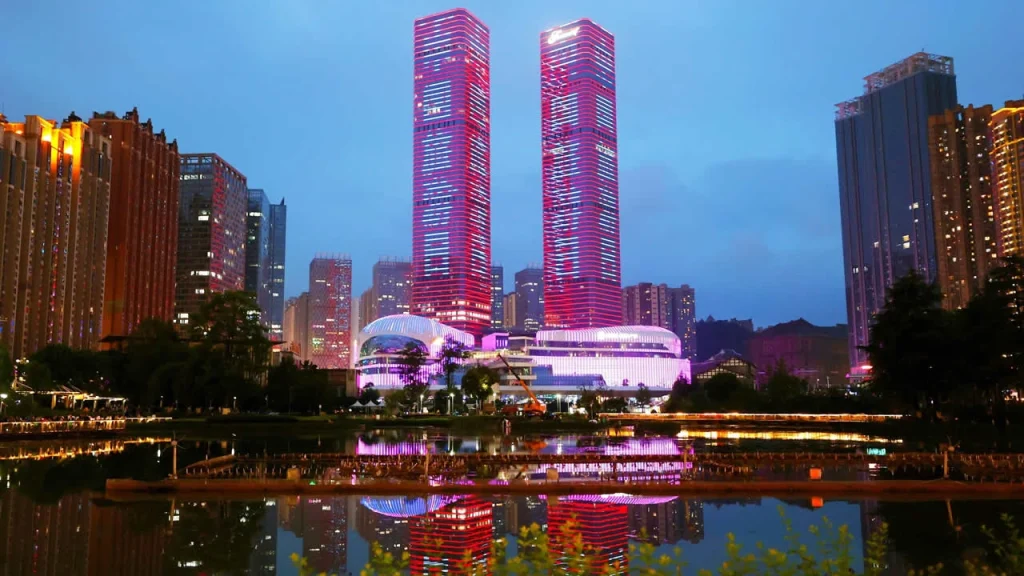
2.Layered Shadows of History
Guiyang’s urban history dates back to the Hongwu era of the Ming Dynasty, when it served as a vital post station along the ancient Dian-Qian Road. The moss-covered walls of Qingyan Ancient Town whisper tales of its military legacy as “a town that nurtured six generals,” while the wind chimes adorning the upturned eaves of Wenchang Pavilion carry the lingering resonance of imperial civil examinations. Even more fascinating are the Tunbao villages scattered amidst remote mountains—descendants of Ming Dynasty border-defense soldiers still preserve their Fengyang-style Hanfu attire, and the rhythmic chants of Dixi Opera echo with dialects unchanged for six centuries.
3.Contemporary Administrative Landscape
Modern Guiyang has evolved into a “dual-core multi-cluster” urban framework: the historic Yunyan and Nanming districts preserve the vibrant pulse of traditional street life, with the Fountain Square commercial hub ablaze in neon lights; the Guanshanhu District showcases modernity’s cutting edge through its Financial City and Big Data Center; while the scholarly aura of Huaxi University Town engages in a dialogue across time and space with the ancient charm of Qingyan Ancient Town. Each district resembles a gemstone with multiple facets, collectively refracting the multifaceted splendor of Guiyang.
Chapter 2: Taste of Guiyang: The Culinary Code of Sour and Spicy Flavors
1.Sour Soup: The Magic of Earth’s Fermentation
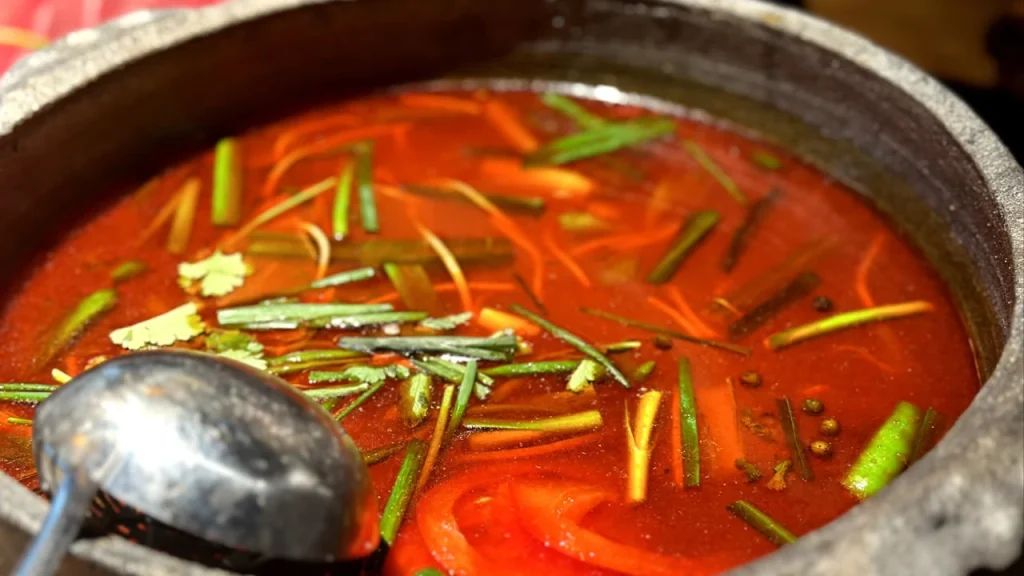
In Guiyang, sour soup transcends mere condiment—it is a culinary creed. The Miao people’s white sour soup, fermented naturally from rice milk, offers a crisp, lingering sweetness; the Dong people’s red sour soup, crafted from pounded cherry tomatoes and chili peppers, glows like carnelian. When a freshly slaughtered Jiangtuan fish (a type of catfish) plunges into the simmering sour soup, the exotic aroma of wood ginger oil ignites the taste buds instantly. This “soul of Guizhou cuisine” once moved writer Wang Zengqi to exclaim: “Such tanginess, such spiciness, such freshness and aroma—truly unparalleled in the world!”
2.Silk Dolls: The “Natural Beauty” of Spring Roll Artistry
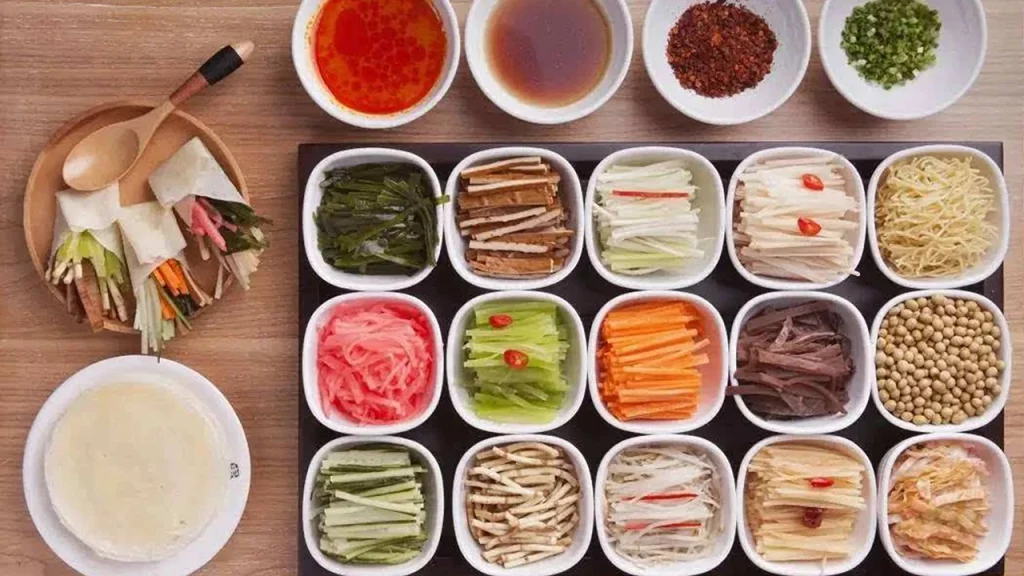
The rice paper, thin as cicada wings, cradles an ensemble of shredded radish, cucumber, houttuynia cordata, and seventeen other “thread-like” ingredients. The sizzling symphony that erupts when specially prepared dipping sauce cascades over the roll—a sound like “zi-zi”—composes Guiyang’s most vibrant street-level melody. For an authentic experience, head to the venerable “Li Lanying” establishment on Huguo Road, where veteran chefs wrap these edible “infant bundles” with poetic fluidity, encapsulating Guiyang’s culinary philosophy within each delicate parcel.
3.Tofu Balls: The Philosophy of Crisp Exterior, Tender Heart
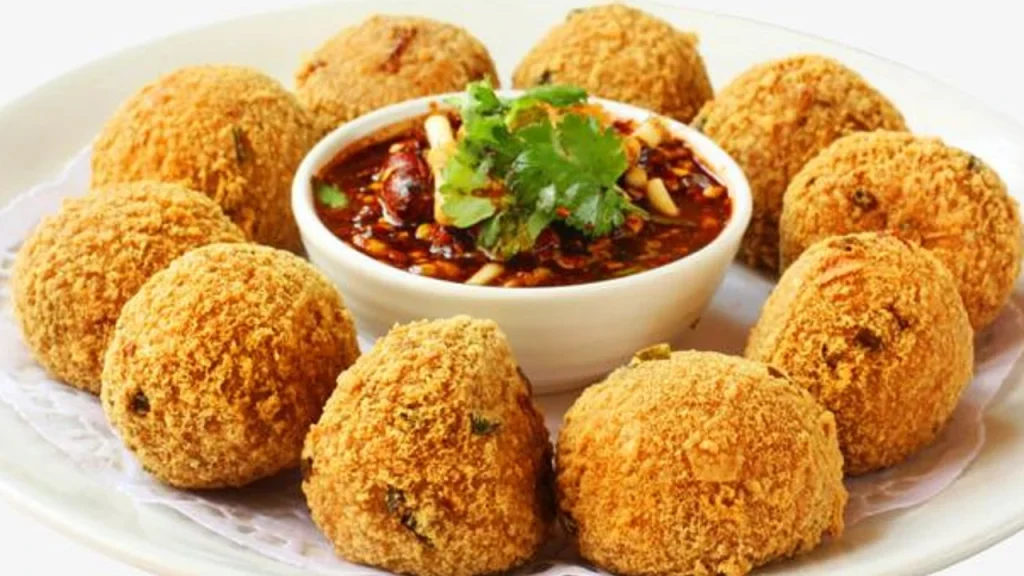
Lei Family’s Tofu Balls reign as the “veteran” of Guiyang’s street food scene. The artistry begins with mashing fermented sour soup tofu, reshaping it into orbs, and dredging them in Sichuan pepper and scallions before deep-frying to golden perfection. The moment your teeth pierce the crunchy shell, molten tofu curd erupts with a surge of chili dipping sauce—scalding enough to elicit gasps, yet irresistible enough to keep chopsticks dancing. This dichotomy of sensory extremes embodies the very philosophy of Guiyang life itself: embracing contradictions with gusto.
4.Love Tofu Puffs: Sizzling Romance on the Griddle
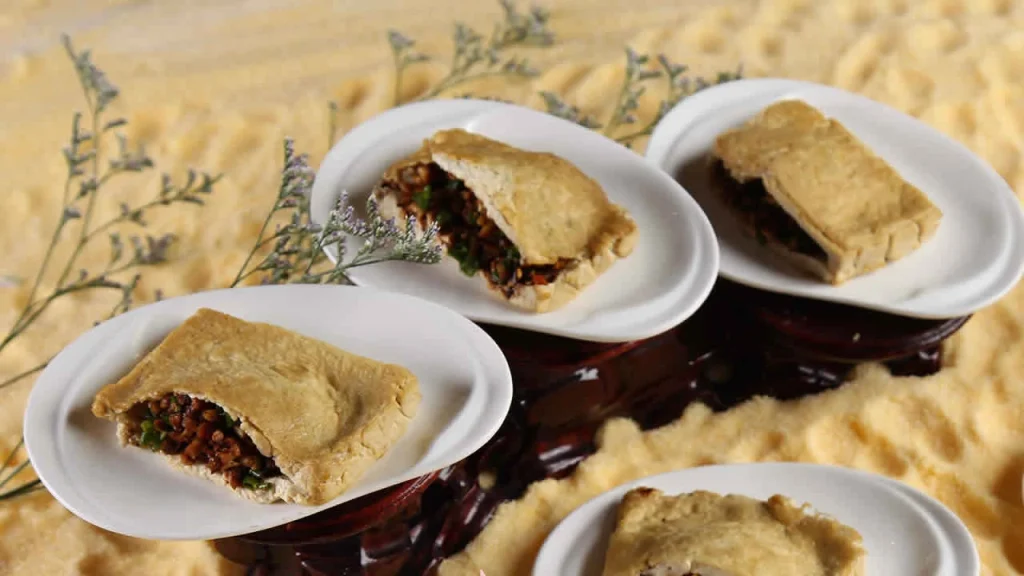
At every street corner, the aroma of charred tofu lingers around sizzling griddles where couples huddle, roasting and chatting. As the tofu puffs swell with heat, a bamboo skewer pierces its golden crust to inject a fiery houttuynia chili paste—a burst of steam and spice that invades the nostrils. Legend whispers this snack earned its romantic moniker during the War of Resistance, when young lovers used “buying tofu puffs” as a pretext for clandestine meetings, forging a culinary metaphor where affection deepens with every scorching bite.
Chapter 3: Secret Realms Unveiled: Must-Experience Adventures in Guiyang
1.Qingyan Ancient Town: A Stone Sonata
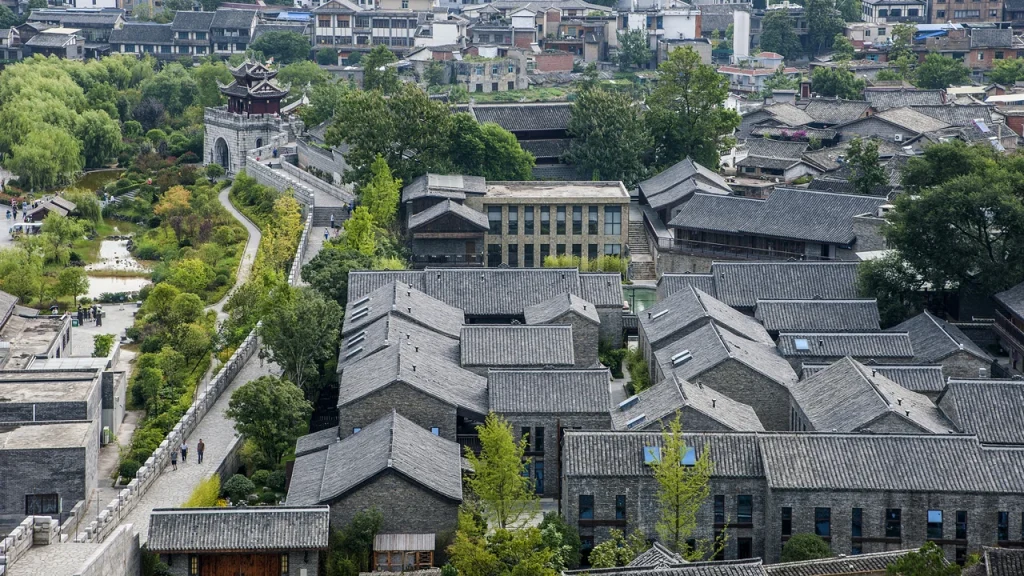
Unlike the delicate charm of Jiangnan water towns, Qingyan Ancient Town forges its character from gray stone. The backstreets’ stone lanes gleam with the patina of centuries, while the intricately carved gatehouses of Zhao’s Ancestral Hall whisper tales of Ming-Qing merchant guilds. No visit is complete without sampling braised pig’s trotters—the dipping sauce’s dual-flower vinegar, a century-old secret recipe from “Qingyan Twin Flowers,” cuts through richness with its tangy aroma, capable of cleansing the palate after three days of indulgence.
2.Qianling Mountain Park: An Adventure in the Macaque Kingdom
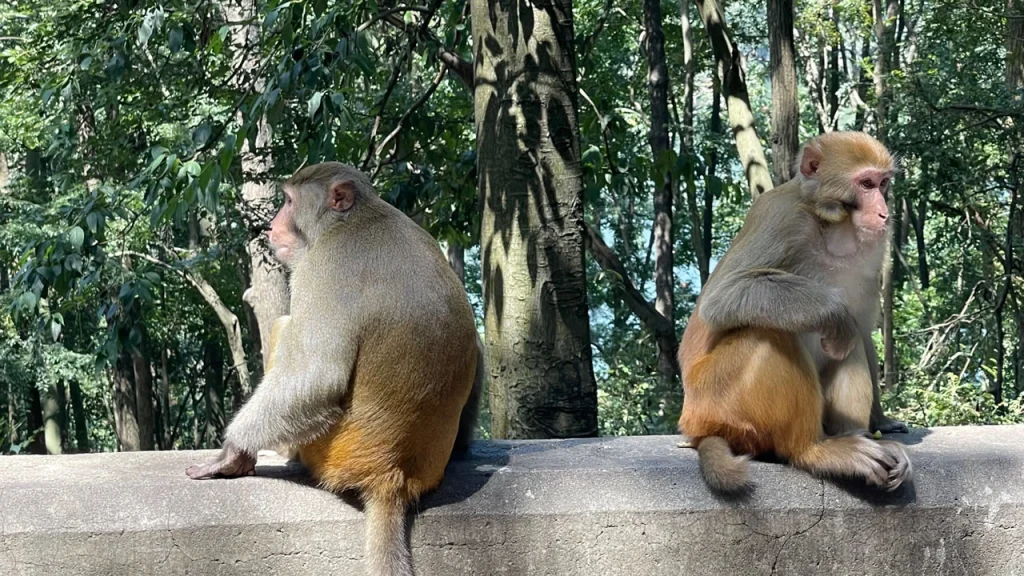
For the price of a 5-yuan ticket, joy awaits: ascend the winding Jiuqu Path at dawn, where macaques swing from tree branches or squat on stone steps peeling peanuts. Amid the Hongfu Temple’s morning chants and evening drums, a sudden monkey king might snatch your mineral water—a quirky testament to Guiyang’s “human-monkey coexistence” philosophy, where urbanites and primates navigate shared spaces with playful pragmatism.
3.Yelang Valley: A Rhapsody of Earth Art
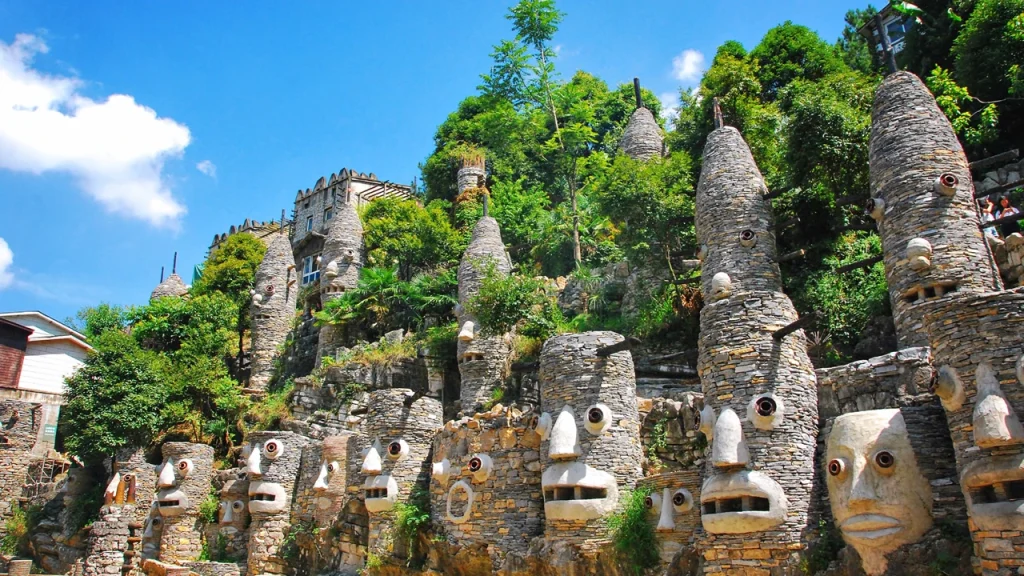
Artist Song Peilun spent two decades sculpting this stone fortress within Huaxi Canyon. Nuo mask stone pillars and totem forests cast surreal shadows under the setting sun, evoking the dwarven kingdoms of “The Lord of the Rings.” As you wander through this labyrinth, every rock formation seems to whisper tales of the ancient Yelang Kingdom, a mythical realm brought to life through one man’s visionary persistence.
4.Tianhe Lake: Karst Cave Spectacle
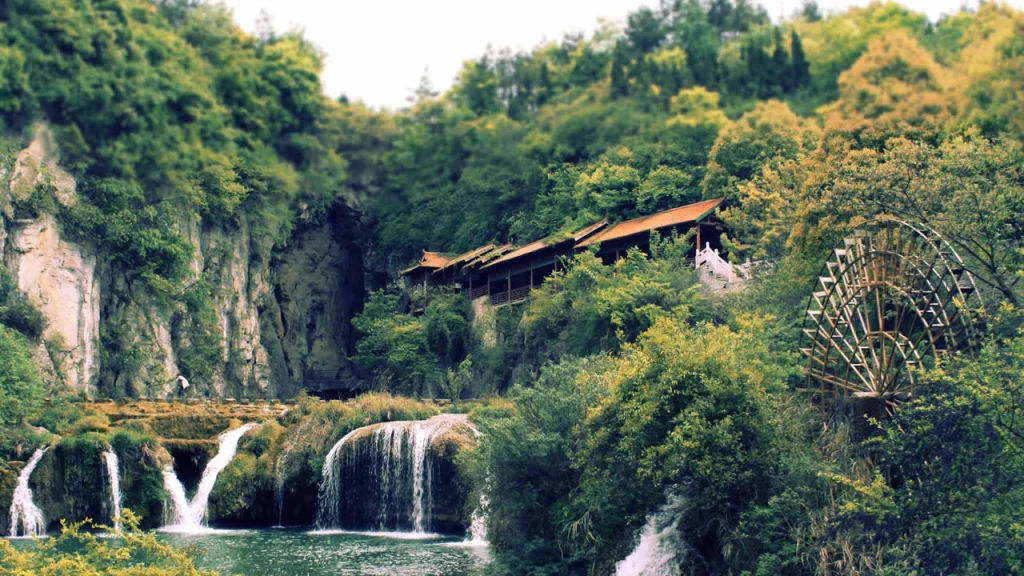
Board a boat to explore Wolong Cave, where stalactites morph into the “Eight Immortals Crossing the Sea” under colored lighting. In the dry cave section, the “Silver Chain Waterfall” cascades like ten thousand shimmering threads—a misty encounter that confirms Tianhe Lake’s reputation as “Guizhou’s Unmatched Marvel.”
Chapter 4: Living Like a Local: Embracing Guiyang’s Rhythms
1. Ganchang: The Philosophy of Earthly Delights in Market Days
On the 3rd, 6th, and 9th days of every lunar month, Huaxi’s ganchang (market day) bursts into vibrant life. Miao grandmothers’ batik fabrics flutter in the breeze, while Buyi elders’ bamboo baskets brim with freshly foraged mushrooms. Stand in line at “Wang’s” beef noodle stall and watch the proprietress artfully arrange mint leaves, pickled radishes, and crushed chili flakes—this bowl of noodles encapsulates the ritualistic joy of Guiyang life.
2.Jiaxiu Pavilion Tea House: Savoring Slow Time by the Nanming River
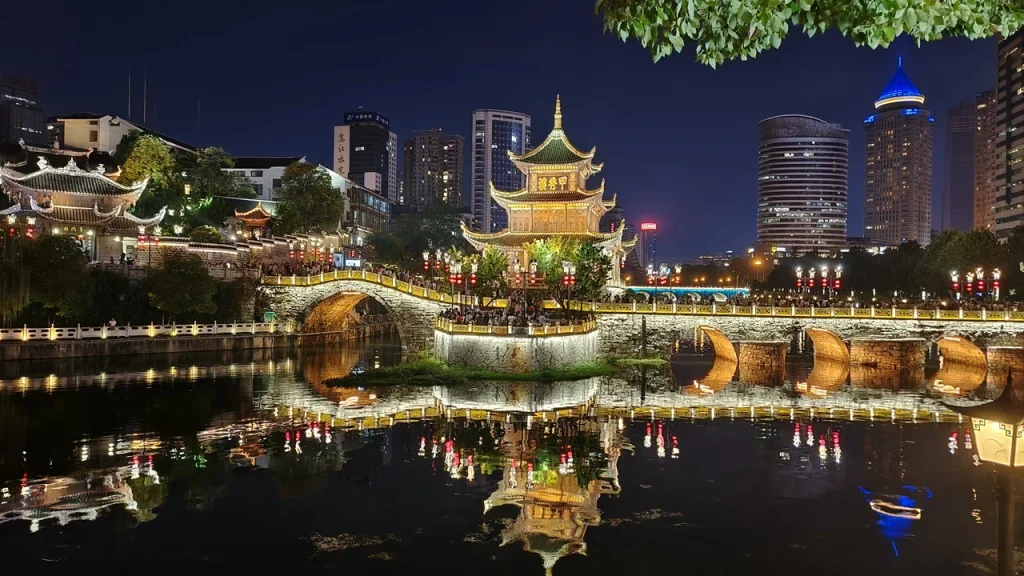
Cuiwei Garden Tea House, nestled by the Nanming River, offers the quintessential Guiyang experience of man shenghuo (“slow life”). Order a pot of Duyun Maojian tea—a renowned green tea from Guizhou—and watch ornate pleasure boats glide through the arch of Fuyu Bridge. Listen as a storyteller recounts tales of Zhang Zhidong, a prominent Qing official, studying here in his youth. As twilight paints the upturned eaves of Jiaxiu Pavilion crimson, one finally grasps the poetic imagery of “Ao Fan Fu Yu”—where mythical turtles emerge from jade-like waters, embodying the harmony of nature and history.
3.Festivals: Decoding Ethnic Revelry
The Miao people’s Siyueba Festival (8th day of the fourth lunar month) sends lusheng (a traditional reed pipe instrument) melodies soaring to the heavens, as young women’s silver ornaments shimmer like celestial rivers under sunlight. During the Dragon Boat Festival, Huaxi’s dragon boat races reach fever pitch—while Duzhu Piao (bamboo rafting) performers balance precariously on single bamboo poles, the riverbanks transform into a vibrant tapestry of wuse nuomifan (five-color sticky rice) stalls. By following Guiyang’s festival calendar, travelers unlock the city’s soul through these living cultural codes.
Chapter 5: Travel Pro Tips: Navigating the “Forest City” Like a Pro
- Best Time to Visit:
May-October offers ideal summer retreats (pack an umbrella for rainy season showers); November-February rewards with snowy vistas (layer up for chilly temperatures). - Transport Tips:
Metro Line 1 connects north and south; taxis start at ¥10. For Qingyan Ancient Town, take Bus 210 and enjoy scenic Huaxi views en route. - Accommodation Picks:
Opt for riverside hotels along the Nanming River for strolls under Jiaxiu Pavilion’s glow. Creative travelers prefer Qingyan’s guesthouses—experience the rhythm of temple bells at dawn and dusk. - Souvenirs:
Stock up on Dan’s Crispy Duck, cili dried pears, and Miao silver jewelry at Erqi Road Snack Street (all under one roof!).
As you savor the last crispy doufu yuanzi (tofu balls) under Qingyun Market’s neon glow, or watch twilight paint Guiyang’s skyline from Dongshan TV Tower, the city’s essence clicks into focus: it cradles the rugged beauty of karst landscapes yet cradles your heart with sour soup’s tender warmth. This is a place where history’s weight and big data’s pulse coexist—a city that composes poetry with mountains and rivers, expresses emotions through sour and spicy flavors. Beyond every guidebook’s itinerary, Guiyang awaits your personal discovery.

Leave a Reply